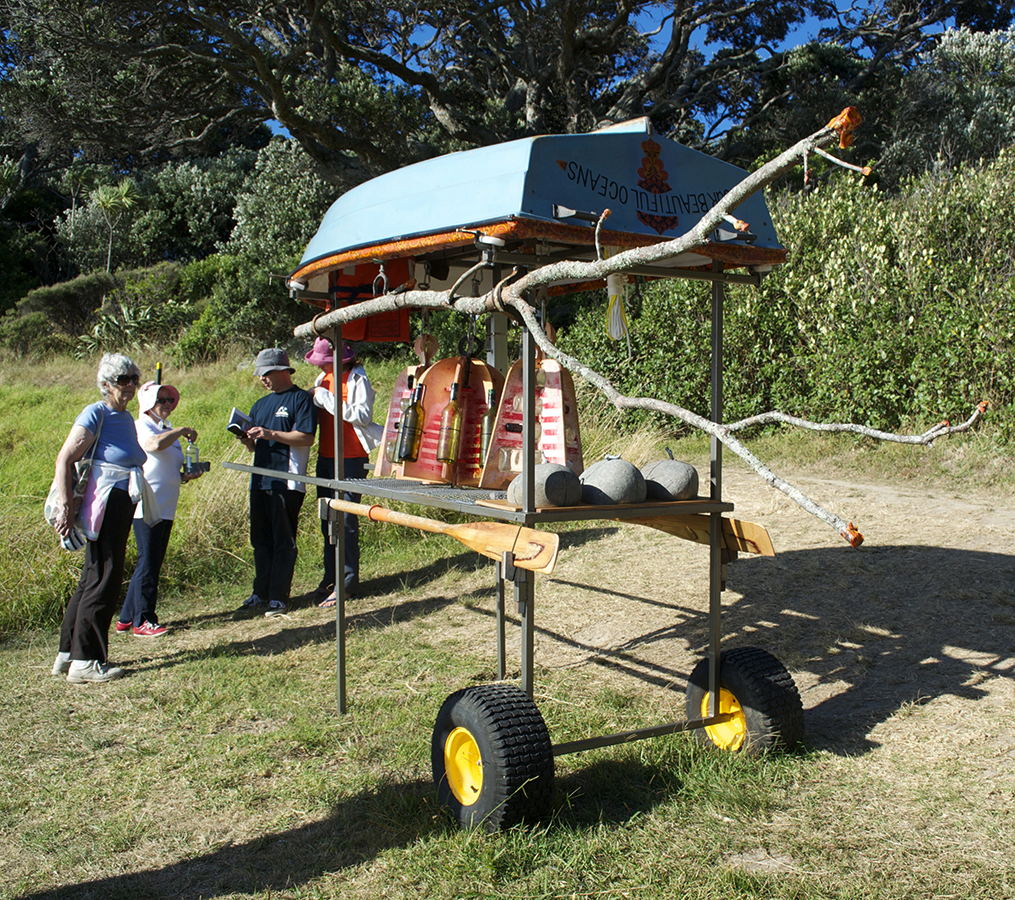
Kitset sculpture number fourteen (“our beautiful ocean”), 2015
“Kitset is presented as a concept, in a sense a deconstruction of form. Found and up-cycled objects, including discarded consumer products found in and around our oceans, give reference to their own histories. As a kit-set the work holds the potential to be transformed and interacted with. Juxtaposing the multifaceted natural and man-made materials gives reference to a larger concept – ‘the weight of humans on nature’. This sculpture challenges how we individually perceive the world around us, providing a flux between an idea and a perceived outcome.”
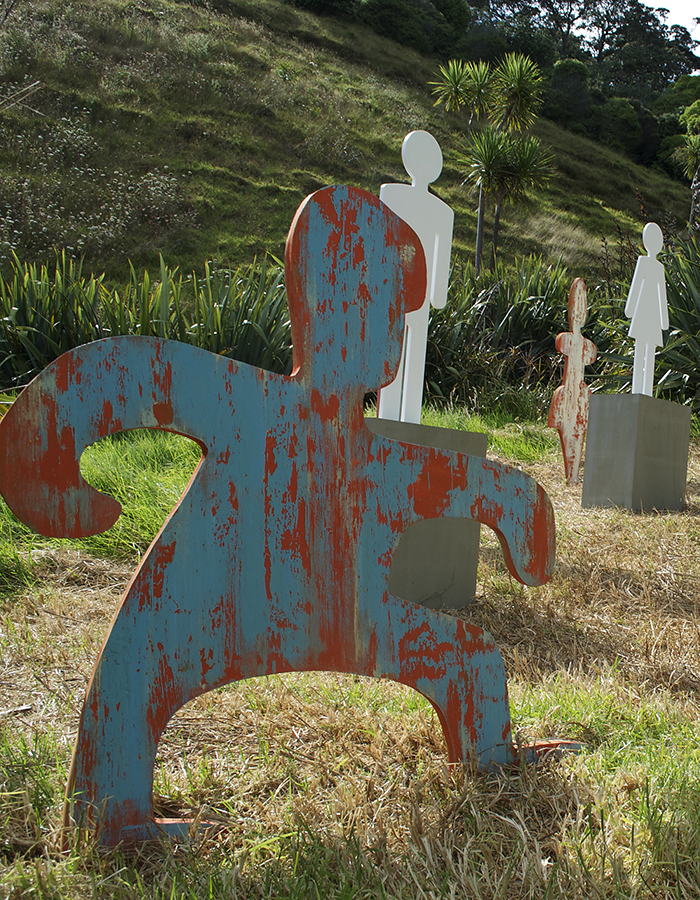
Sculpture Walk, 2015
Acrylic paint, 50mm tanalised plywood and 20mm laminex solid surface
“A group of 9 life-size cartoon-like characters are viewing 3 sculptures on plinths. The ‘cartoon’ figures are a collection of diverse styles-ancient, manga, kids’ drawings, graffiti, traffic-sign, cartoon, modernist, Rorschach ink blob and geometric. In contrast the 3 ‘ideal’ plinth sculptures are ironically mundane sign figures.
The sculpture echoes the Platonic notion of ‘the idea of a chair, the chair itself and a drawing of the chair’ each being one step removed from the next, except almost in reverse here, as the hSOTG visitors will also be regarding the figures regarding the sculptures and inevitably someone, at one more step removed, will be photographing the whole event”.
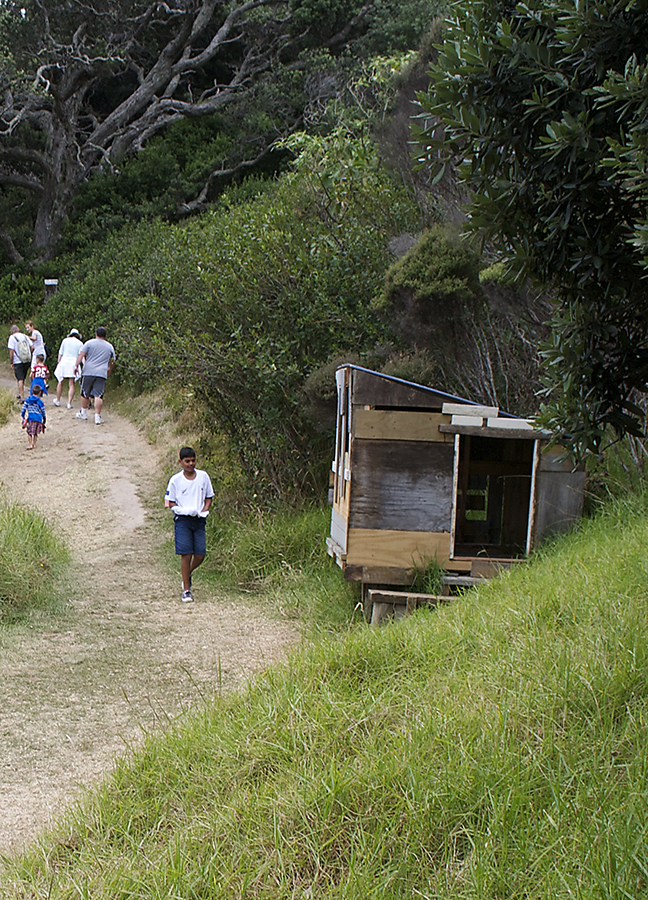
Tree Hut, 2015
Locally sourced second hand wood
Tree Hut is a site-specific artwork made over a weekend time frame working in response to its location and its island setting. Built near the remains of a tree house, Maloy constructed his, working with second-hand wood sourced locally from the Island. Located below the branches of a pohutukawa tree and the wild grass below, the work sits waiting for discovery and acts as a trigger for contemplative thought which in turn completes the work.
Maloy’s Tree Hut is the artist’s sixth in what has become an ongoing series, with each adding to the narrative and informing the next. His first tree hut was built from materials sourced from around Maloy’s family home and exhibitedat the Sue Crockford Gallery in 2004. The most recent hut was commissioned for Freedom Farmers at the Auckland Art Gallery in 2013/14, where Maloy made a large scale tree house working with left-over materials sourced from within the Gallery.
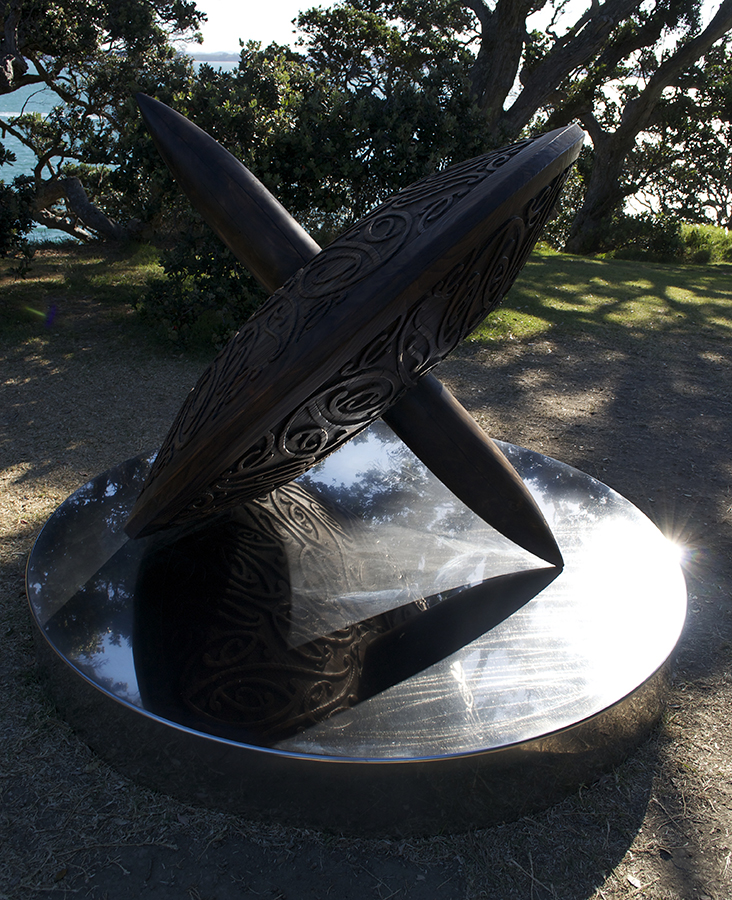
Tāwhirowhiro Wood, 2015
stainless steel
Tāwhirowhiro is the Māori term meaning “spin” or “rotate”. It captures the motion associated with a spinning top which forms the basis of the sculpture installation of a carved and carbon-charred wooden top on a polished stainless steel platform. Ironically the top remains motionless, apart from the inherent rhythmic curvilinear whorls of kōwhaiwhai and clouds reflected in the mirror surface of the circular platform.
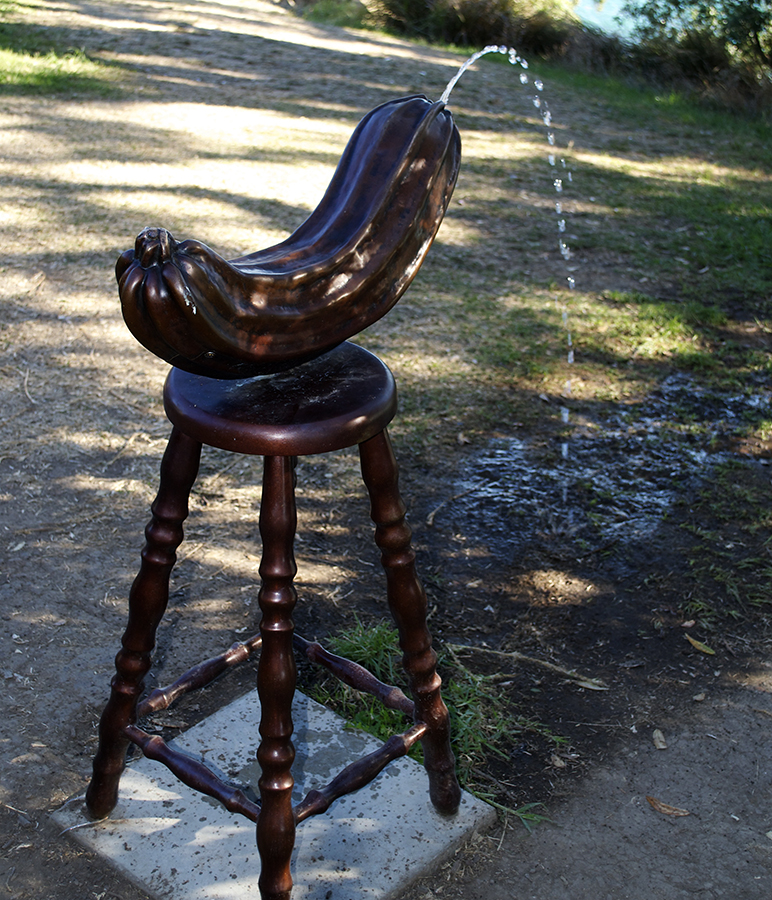
Princess XL (fountain #1), 2015
Silicon bronze
Princess XL (fountain #1) began as an action performed by a young boy playfully brandishing a large marrow picked fresh from the family vegetable garden. Though small, Eady’s garden provides food for his family. It is a social space where the sweat of labour and sharing and the discovery of knowledge are bound by dirt and the shit of quail and chickens.
Eady’s 2014 exhibition The Shit Gardener recontextualised the seemingly backyard banal into a symbolic playground. Princess XL (fountain #1) can be understood by tracing a line from ancient civilisations to early Modernism. For an early civilization the notion of fertility necessarily and shamelessly included sexual reproduction of both livestock and humankind, so fertility gods often sported a conspicuous phallus.
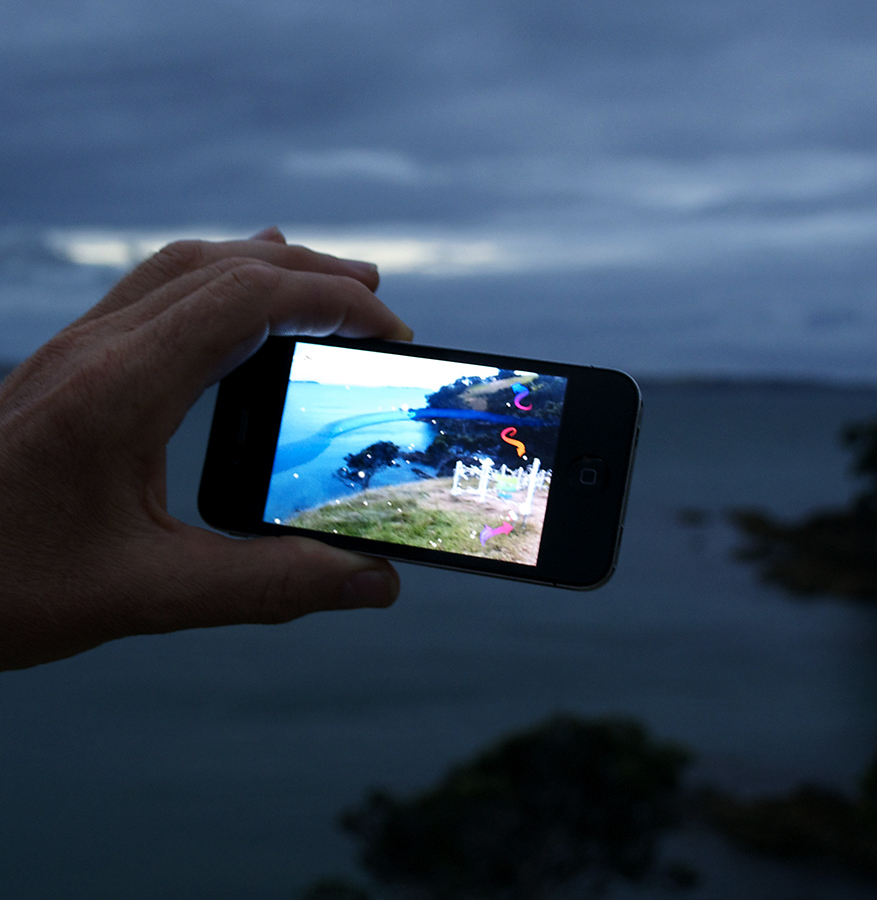
Wind Song, 2015
Geo-spatial mobile-augmented reality
Wind Song responds to the location, geography, flora and fauna of the headland site through geo-spatial locative media to explore intersections between nature, science, technology and society. While a location contains materials, vistas, sounds and smells, the Wind Song project augments the headland site by activating elements that are beyond the physical. The experience of headland – through the lens of Wind Song – explores place, time, and the elements, where actual and virtual space come together in social space, asking us to consider what it means to live on and with our planet, and with each other.
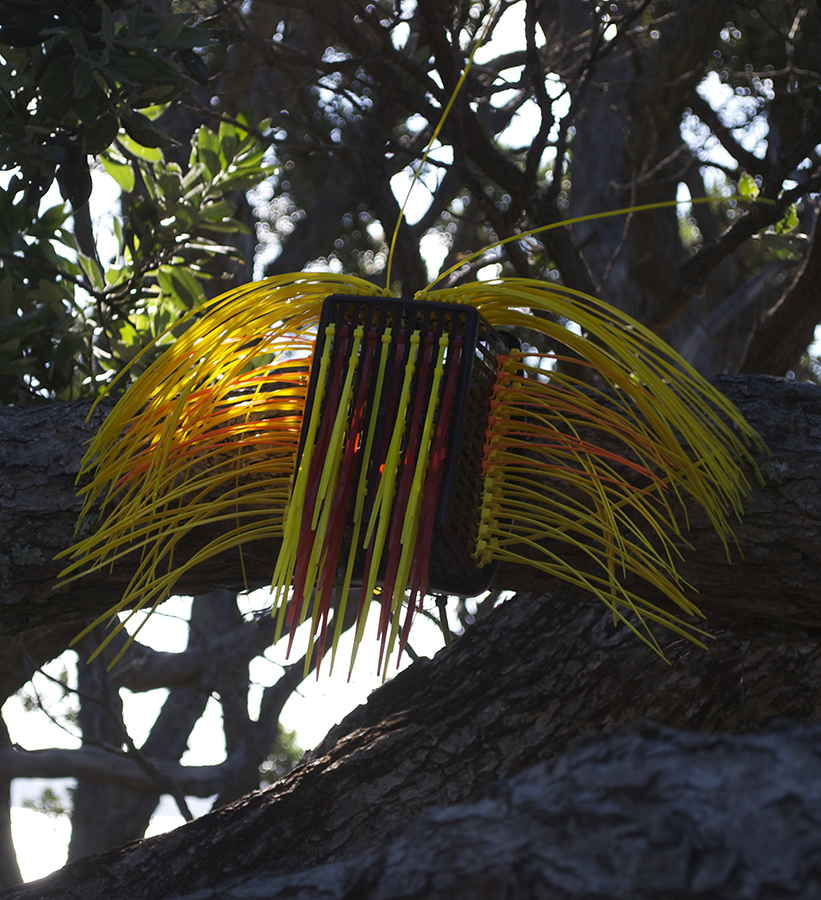
Flying Haptics, 2015
Cable ties, peg baskets, washers, rawl plugs, plastic curtain rings, soap dishes, hair curlers, label ties, beads, computer plug caps
Art writing and art making are a natural combination for Hurrell who used to write criticism for The Press in Christchurch in the mid-eighties. As a result of that and conversations he had with Billy Apple around that time, he became interested in the parallels (and differences) between review writing and art making as methods of dispersing opinion, the similarities (and contrasts) between so-called ‘rational’ preplanning that might be applied to justify argument, and spontaneous ‘illogicality’ that might be applied to mark making or linear ‘drawing’ elements suspended in space.
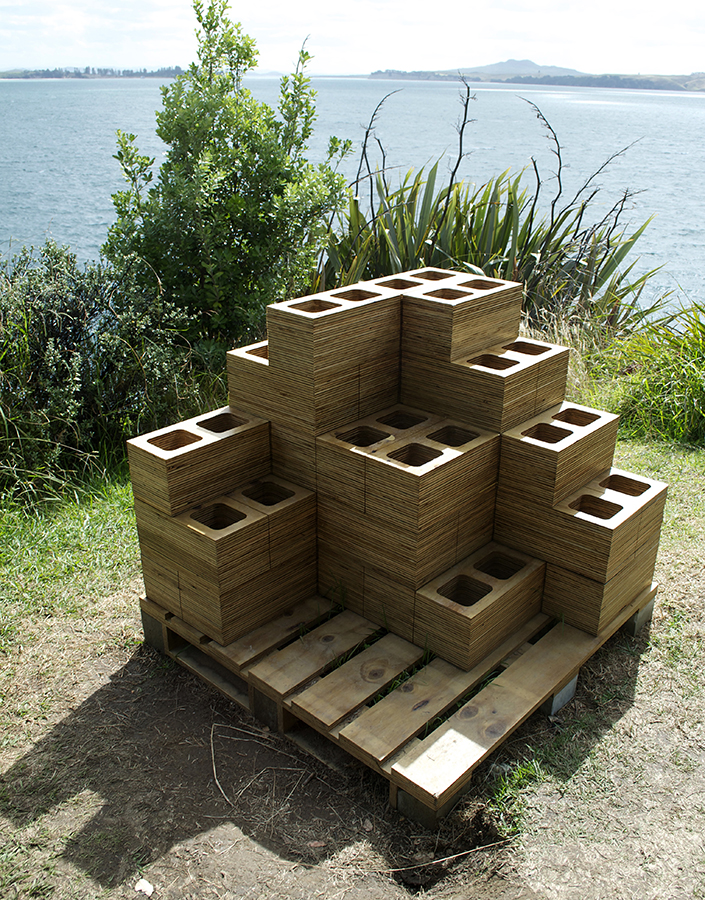
Half a Pallet of Building Blocks, 2015
Plywood, concrete
Half a Pallet of Building Blocks is a material translation and inversion that brings the current building industry together with mid to late 20th Century art historical references, whilst critiquing notions of craft and perceived value in labour.
The work is hand made and unique – but made out of very ordinary materials. It resembles a seemingly forgotten, half remaining pallet of building material, absurdly sitting in the middle of a picturesque walking track. It is also this idea of displacement or unusualness in an almost believable context that promotes the idea of potentiality elsewhere – a hypothetical questioning of where the other half of the blocks might exist, which also partially seeks to question the importance of the object itself.
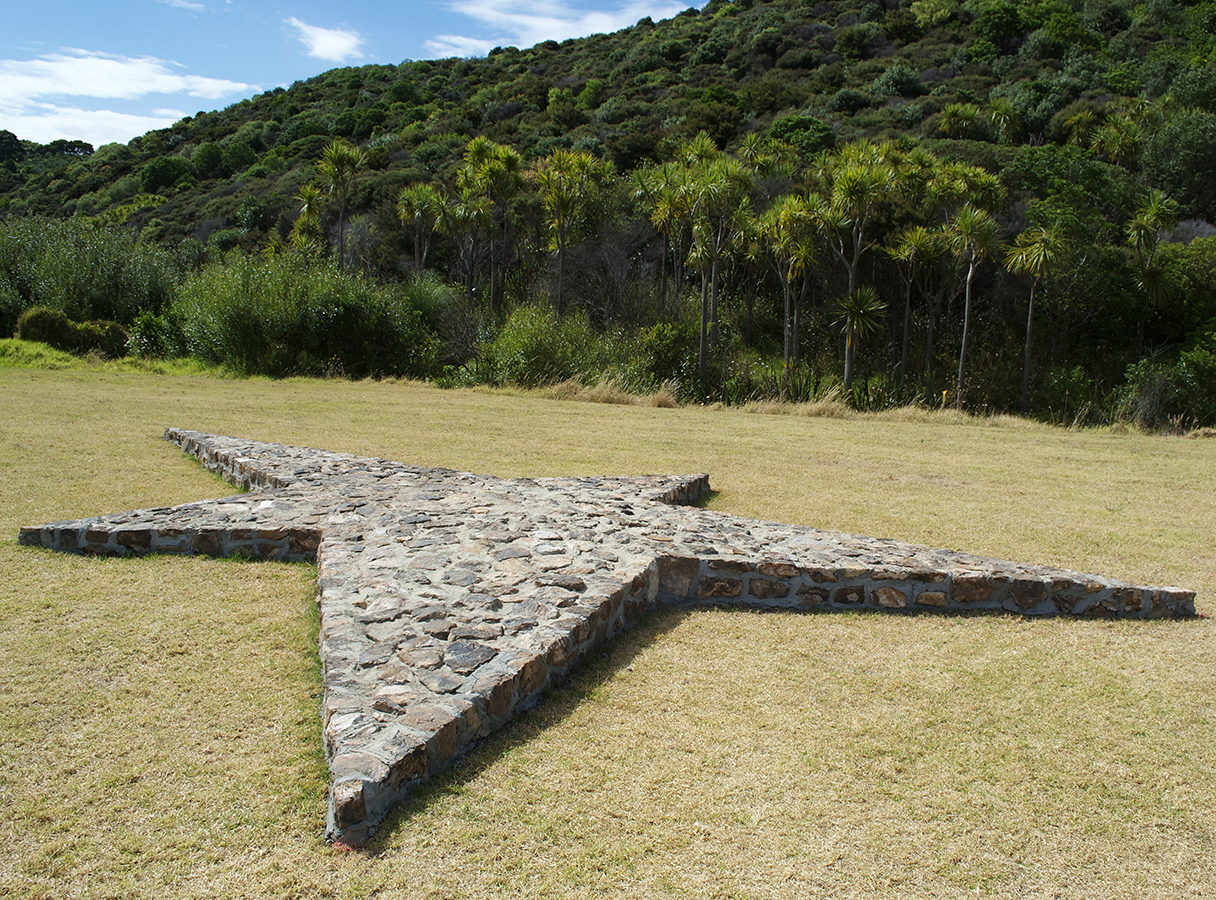
Star Mound, 2015
Stone: Stoney gold (local)
The term “star” or “cog mound” has generally been taken to designate any mound that is composed of rock or earthen fill and which usually has a stone facing of anywhere from one to about 14 courses high. There are over 300 star mounds recorded in Samoa and archaeologists suspect there are many more yet to be discovered. The oldest mounds tested so far were constructed between 700 AD to 1100 AD, 900 years ago. Samoan mythology and cultural expressions reference the ritual of pigeon-catching (a chieftain sport) on the mounds along with ceremonies and magical rituals to cure illnesses.
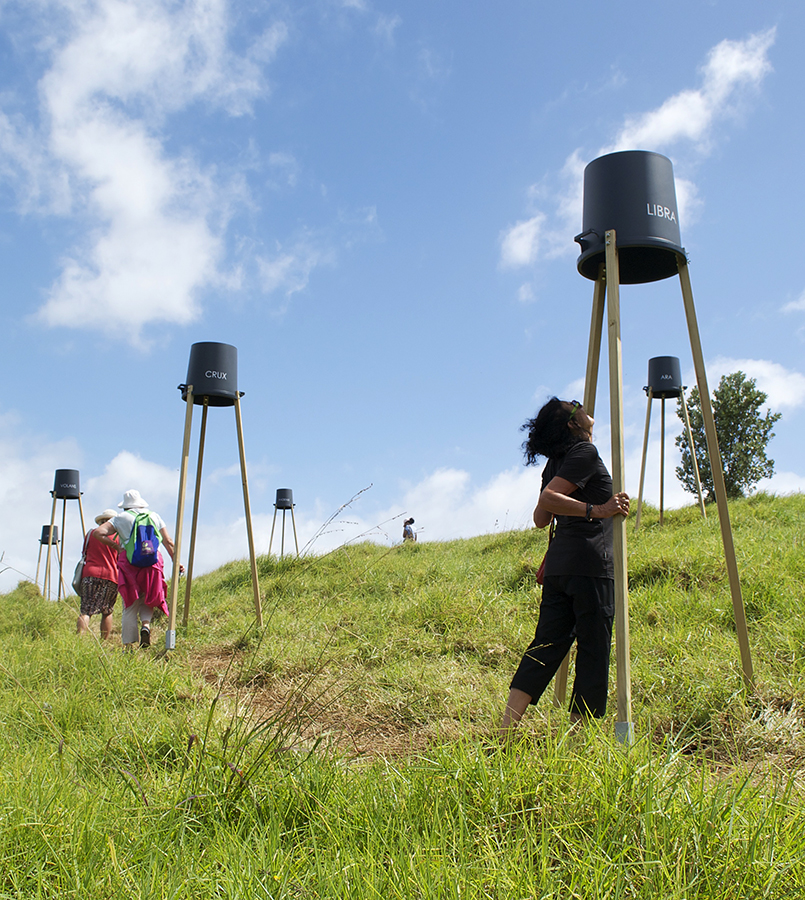
Artificial Astronomy, 2015
Plastic tubs, wood, tape text, metal post stakes
The installation consists of 7 star constellations from the Southern Hemisphere. The work deals with the ecological problem of light pollution, which is caused by excessive and/or obtrusive artificial light that has made the stars almost impossible to see in certain areas. Artificial night lighting is increasing and the ecological effects are profound, as most species (including humans) depend on light and dark for some portion of their daily or seasonal life cycle. Increased night lighting associated with human civilization disrupts important behaviours and physiological processes with significant ecological consequences
Artificial Astronomy invites visitors to view the night sky that’s being threatened or in some parts perhaps even lost. The work can be seen as a humble homage to the greatness of the night sky but even more as a reminder of the harmful effects of light pollution.










